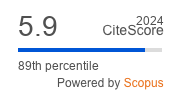Article | Open Access
Search in the Newsroom: How Journalists Navigate Google’s Dominance in a Hybrid Media System
| Views: | 830 | | | Downloads: | 1213 |
Abstract: As a significant algorithmic actor in a media system where humans and machines interact to produce and disseminate news information, Google acts as an external algorithmic editor to news media, shaping what information gets picked up for broader consumption. Journalists, in their attempt to inform and create a dialogue with the public, are constantly aware of Google’s dominance and, for the last two decades, have experienced the shifting power dynamics in the digitized media system. Based on 18 interviews with US-based journalists across a range of newsroom types and regions, this interview study shows how reporters and editors deal with this new external algorithmic editor. The findings demonstrate that they do that through resistance, relinquishment, and renegotiation. Journalists first resist giving up on their editorial values, setting particular limits around framing and selecting which hard news stories to cover, even when facing algorithmic pressure towards provocative and eye-grabbing content. Second, they relinquish some editorial control and create segregated content (“search work”) tailored to the algorithm and toward audience growth. Third, they renegotiate their values and roles to fit a new logic in which newsworthiness and commercial values overlap. These findings confirm and build upon previous work delineating how journalists navigate their 20th-century values with 21st-century digital curation in a hybrid media system shaped by both human and machine logics.
Keywords: digital platforms; news judgment; professional journalistic values; search engines
Supplementary Files:
Published:
© Daniel Trielli. This is an open access article distributed under the terms of the Creative Commons Attribution 4.0 license (http://creativecommons.org/licenses/by/4.0), which permits any use, distribution, and reproduction of the work without further permission provided the original author(s) and source are credited.


